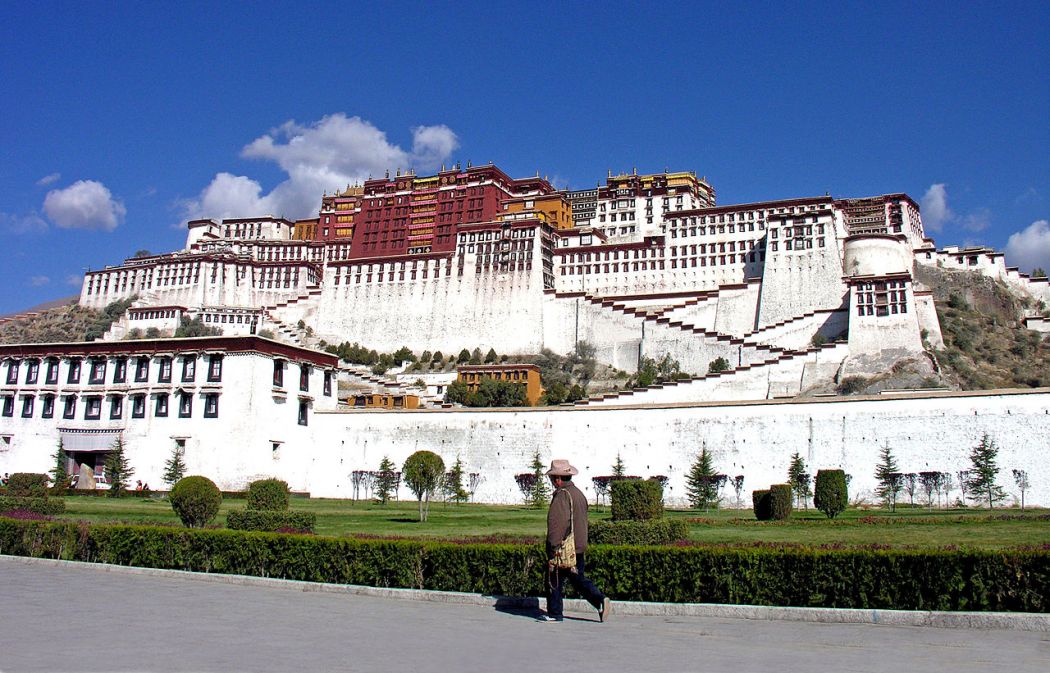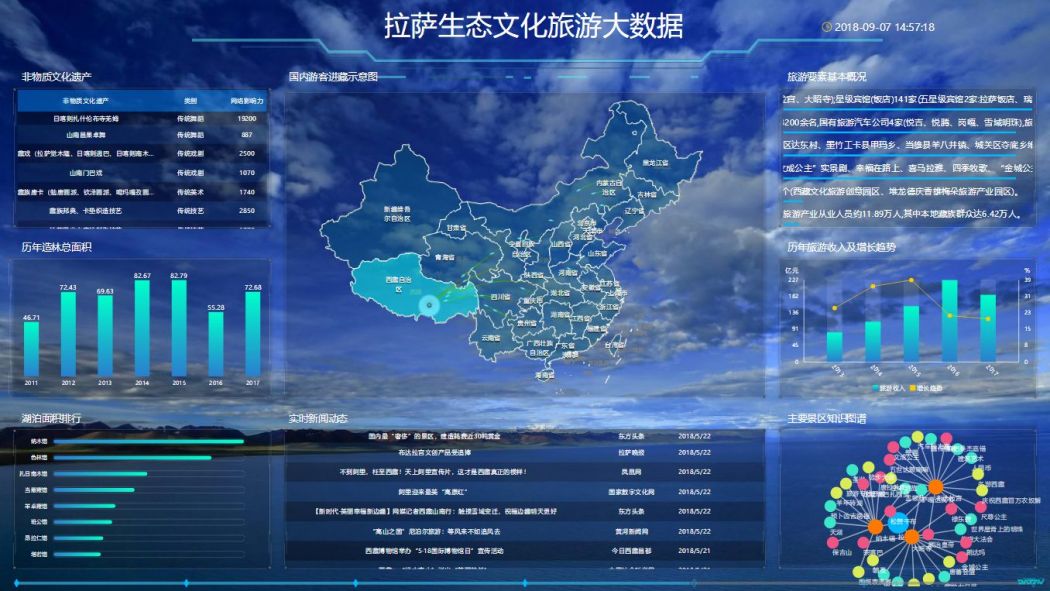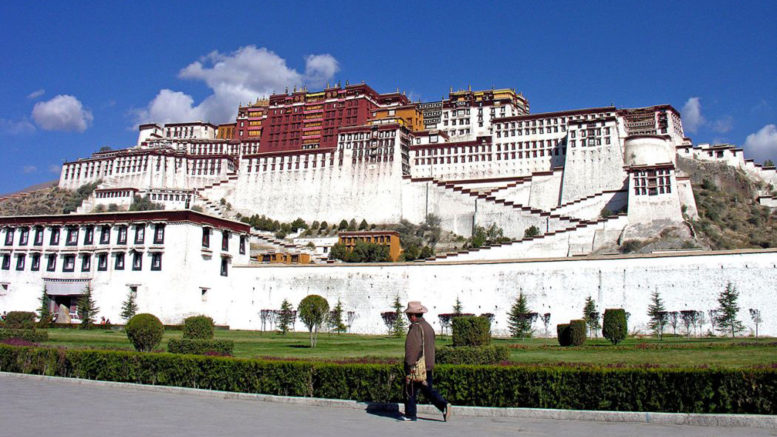By Tenzin Tsultrim, Hong Kong Free Press
The Chinese government is rapidly increasing the role of big data in maintaining Beijing’s technological grip over the Tibetan people, according to Claude Arpi, a long-time Tibet-Watcher and Tibetologist. But over the last few years, the nets in the sky and traps on the ground have grown wider, tighter and more digitized, with the use of big data and artificial intelligence tools.

Potala Palace, Lhasa, Tibet. Photo: Wikimedia Commons/archer10 (Dennis).
From monitoring the activities and opinions of the Tibetan people through the stationing of over 21,000 government officials across Tibet to the data collections of voices and genetic information, the Chinese Communist Party has deployed an increasingly sophisticated surveillance strategy.
These modern surveillance systems are also employed to monitor foreign tourists with the creation of a big data centre on tourism in Lhasa, created jointly by the Tibet University and Beijing-based Wiseweb Technology Company.
Besides keeping track of tourists, this big data centre has other important functions. Wang Sheng, deputy manager of Wiseweb Technology Company was quoted in the Global Times, as saying, “The real time monitoring could give a warning to the government on negative social events.” Hence, it has a dual applicability for mass monitoring across Tibet.

Wiseweb’s Tibet big data system. Photo: Screenshot.
Not only that, the recent introduction of real-time monitoring technology in 200 taxis in Lhasa further increases the control and surveillance imposed on foreign tourists in Tibet.
Cui Shaoyou, the vice manager of an unnamed company told the Global Times, “the taxis are being test run, and increasing the number of such taxis and expanding the scheme to other areas depends on the outcome of the ongoing one-month test run.” From his words, it indicates the plan for an expansion of this service across the Tibetan Plateau.
The recent installation of three 5G base stations in Tibet and the construction of data banks in Lhasa will facilitate the increasing use of real-time monitoring technology for better live-streaming, efficiency and data storage. The recent data leak of 2.6 million people under surveillance in Xinjiang illustrates the potential use of a database in the hands of an authoritarian regime.

A CCTV camera in a street in Lhasa, Tibet. Photo: Woeser.
Hence, from the above developments in Tibet, it appears that soon a series of new advanced security-related apparatuses and artificial intelligence tools, including gait analysis, will be introduced across Tibet, in the name of safety of the Tibetan people and tourists.
In short, Tibetans are the lab rats for a grand plan of total smart surveillance across China.
Tenzin Tsultrim earned his Ph.D. from University of Madras, Chennai. Currently, he is a Research Fellow at the Tibet Policy Institute, a think tank of the Central Tibetan Administration, Dharamshala, India.

